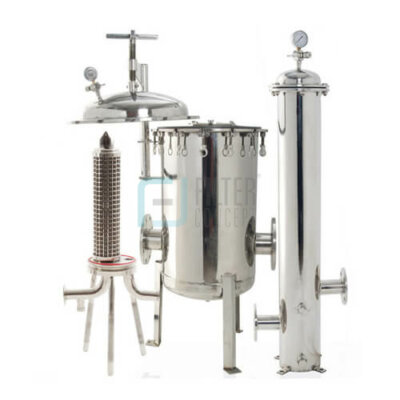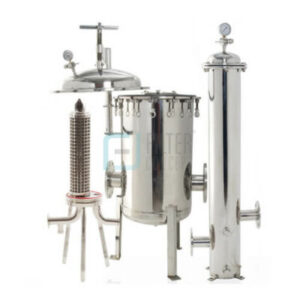
In the world of industrial filtration, cartridge filter housings play a crucial role in maintaining clean and safe working environments. Whether you’re familiar with these systems or just starting to explore them, this article will guide you through everything you need to know about choosing the best cartridge filter housing for your industrial application.

Table of Contents
| Sr# | Headings |
|---|---|
| 1 | Introduction |
| 2 | What are Cartridge Filter Housings? |
| 3 | Types of Cartridge Filter Housings |
| 4 | Key Features to Look For |
| 5 | Benefits of Using Cartridge Filter Housings |
| 6 | Considerations Before Buying |
| 7 | Installation and Maintenance |
| 8 | Popular Brands in the Market |
| 9 | Case Studies of Successful Applications |
| 10 | Conclusion |
| 11 | FAQs |
Introduction
Imagine a world where industrial processes run smoothly without worrying about contaminants. That’s the promise of cartridge filter housings. These essential components ensure that harmful particles are filtered out, keeping production lines efficient and workers safe. In this article, we’ll break down the types, benefits, and considerations of cartridge filter housings, helping you make an informed decision for your industrial needs.
What are Cartridge Filter Housings?
Cartridge filter housings are robust containers designed to hold cartridge filters. These filters are crucial in removing impurities like dirt, debris, and even bacteria from various liquids and gases used in industrial settings. By trapping contaminants effectively, cartridge filter housings ensure that the output meets quality standards, prolonging equipment life and enhancing overall safety.
Types of Cartridge Filter Housings
Single Cartridge Housings
Single cartridge housings are compact units ideal for applications with lower flow rates or space constraints. They are easy to install and maintain, making them popular in smaller-scale industrial operations.
Multi-Cartridge Housings
For higher flow rates and larger volumes of filtration, multi-cartridge housings are preferred. These units can accommodate multiple cartridges, increasing surface area and efficiency in filtering contaminants.
Key Features to Look For
When choosing a cartridge filter housing, several key features can significantly impact its performance:
- Material: Look for housings made from durable materials like stainless steel or polypropylene, suitable for your application’s environment.
- Pressure Rating: Ensure the housing can withstand the operating pressures of your system without compromising filtration efficiency.
- Sealing Mechanism: A secure sealing mechanism prevents bypass and ensures all flow passes through the cartridge filter, maximizing filtration effectiveness.
Benefits of Using Cartridge Filter Housings
Cartridge filter housings offer numerous benefits:
- Improved Filtration: Enhance product quality by removing contaminants effectively.
- Cost Efficiency: Reduce operational costs associated with maintenance and replacement of downstream equipment.
- Versatility: Suitable for a wide range of industries including pharmaceuticals, food and beverage, and chemical processing.
Considerations Before Buying
Before purchasing a cartridge filter housing, consider these factors:
- Compatibility: Ensure compatibility with your existing filtration system and the substances being filtered.
- Maintenance Requirements: Evaluate ease of maintenance and availability of replacement cartridges.
- Regulatory Compliance: Verify if the housing meets industry standards and regulatory requirements for your specific application.
Installation and Maintenance
Installing and maintaining cartridge filter housings is straightforward but crucial for optimal performance:
- Installation: Follow manufacturer guidelines for proper installation to prevent leaks and ensure efficient operation.
- Regular Maintenance: Schedule routine inspections and cartridge replacements as per manufacturer recommendations to avoid system downtime.
Popular Brands in the Market
Several brands excel in producing reliable cartridge filter housings:
- Pentair
- Parker Hannifin
- Pall Corporation
- Eaton
- Sartorius
Case Studies of Successful Applications
Case Study 1: Pharmaceutical Industry
In pharmaceutical manufacturing, maintaining sterile conditions is paramount. Cartridge filter housings have been instrumental in ensuring that pharmaceutical products meet stringent quality standards, protecting both consumers and the brand’s reputation.
Case Study 2: Food and Beverage Industry
From breweries to dairy processing plants, the food and beverage industry relies on cartridge filter housings to remove contaminants and ensure product purity. This technology helps maintain flavor consistency and consumer safety.
Conclusion
Choosing the right cartridge filter housing can significantly impact the efficiency and safety of your industrial processes. By understanding the types, benefits, and key considerations outlined in this article, you’re well-equipped to make an informed decision that meets your specific filtration needs.
FAQs
What maintenance is required for cartridge filter housings?
Regular maintenance includes inspecting seals, checking for leaks, and replacing cartridges as needed to maintain optimal filtration efficiency.
How do I choose between single and multi-cartridge housings?
Choose single cartridge housings for lower flow rates or space constraints, and opt for multi-cartridge housings for higher flow rates and increased filtration capacity.
Are cartridge filter housings suitable for food processing?
Yes, cartridge filter housings are commonly used in the food and beverage industry to ensure product purity and safety by removing contaminants.
Can cartridge filter housings be used for both liquids and gases?
Yes, cartridge filter housings are versatile and can effectively filter both liquids and gases depending on the cartridge type and housing design.
What should I consider when installing cartridge filter housings?
Ensure proper compatibility with existing systems, follow installation guidelines meticulously, and verify sealing to prevent leaks and ensure efficient filtration.